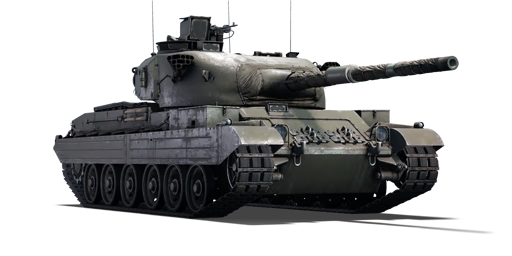The Vickers Mk.3 was a British main battle tank, developed from the previous Vickers MBT Mk.1 and Mk.2. It was the last tank made by Vickers that saw export sales. The main difference between the Vickers Mk.1 and Mk.3 is the turret, where the Mk.3 featured a cast turret front welded to an armoured body, as well as a cast mantlet offering better protection compared to the flat one found on Mk.1. The Mk.3 also had increased depression from -7° at Mk.1 to -10° for Mk.3. For increased accuracy, a laser range finder from the Chieftain was added, as the 12.7 mm ranging machine gun was deemed inadequate for the ranges the tank was supposed to engage targets from. The ammo stowage of the Mk-3 was also bigger compared to the Mk.1, with space for additional six rounds for a total of 50. In 1977, Kenya was the first country to order the Vickers Mk.3, with 76 tanks and 7 armoured recovery vehicles based on the Vickers chassis. Between 1981 and 1990, Nigeria ordered another 136 tanks and 12 ARV together with 26 bridge laying tanks. The last customer to order the Vickers Mk.3 was Tanzania, with 4 ARV delivered in 1989. All countries that ordered the tank still have it in service to this day.
The Vickers Mk.3 was introduced in Update "Direct Hit". Unlike its predecessor, the Vickers Mk.1, the Mk.3 offers better ballistic protection in the turret, as well as better gun depression allowing for easier hull-down positioning. Unlike the Mk.1, the Mk.3 gains access to the M456 HEATFS shell, offering 400 mm CE penetration at all ranges against targets where APDS would shatter or not penetrate. The Mk.3 also offers slightly better mobility due to the 720 hp engine compared to the 608 hp engine found in the Mk.1 while the weight increased only by 600 kg. The Mk.3 also offers higher magnification optics compared to the Mk.1 although with fixed 10.0x zoom.















